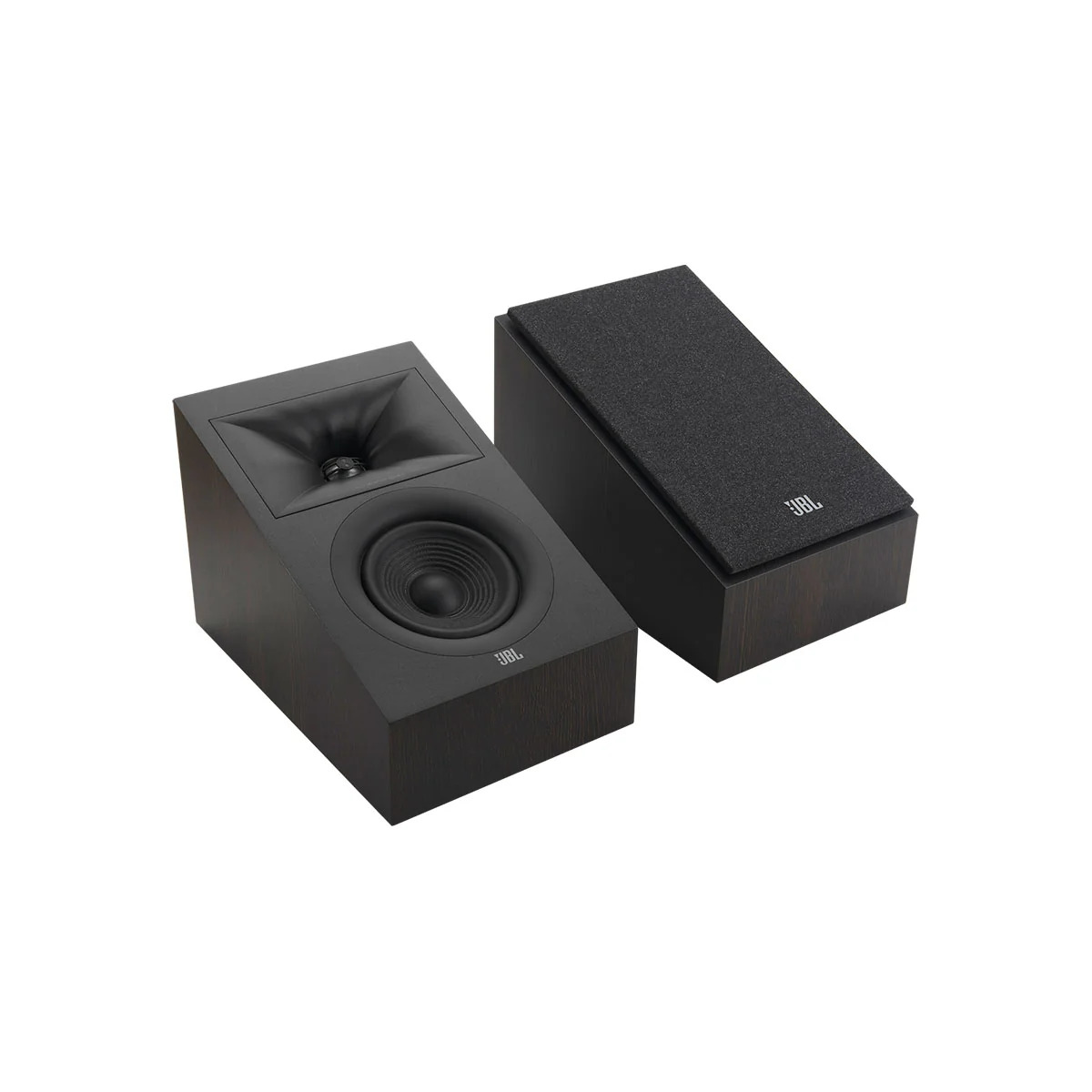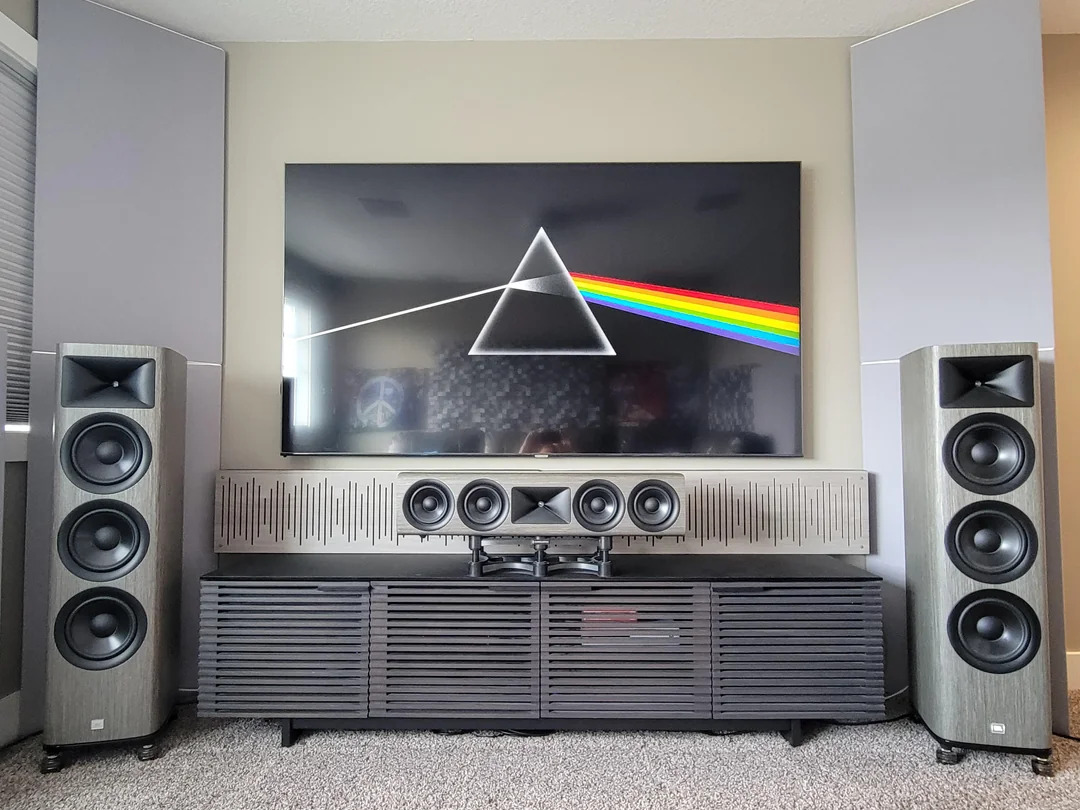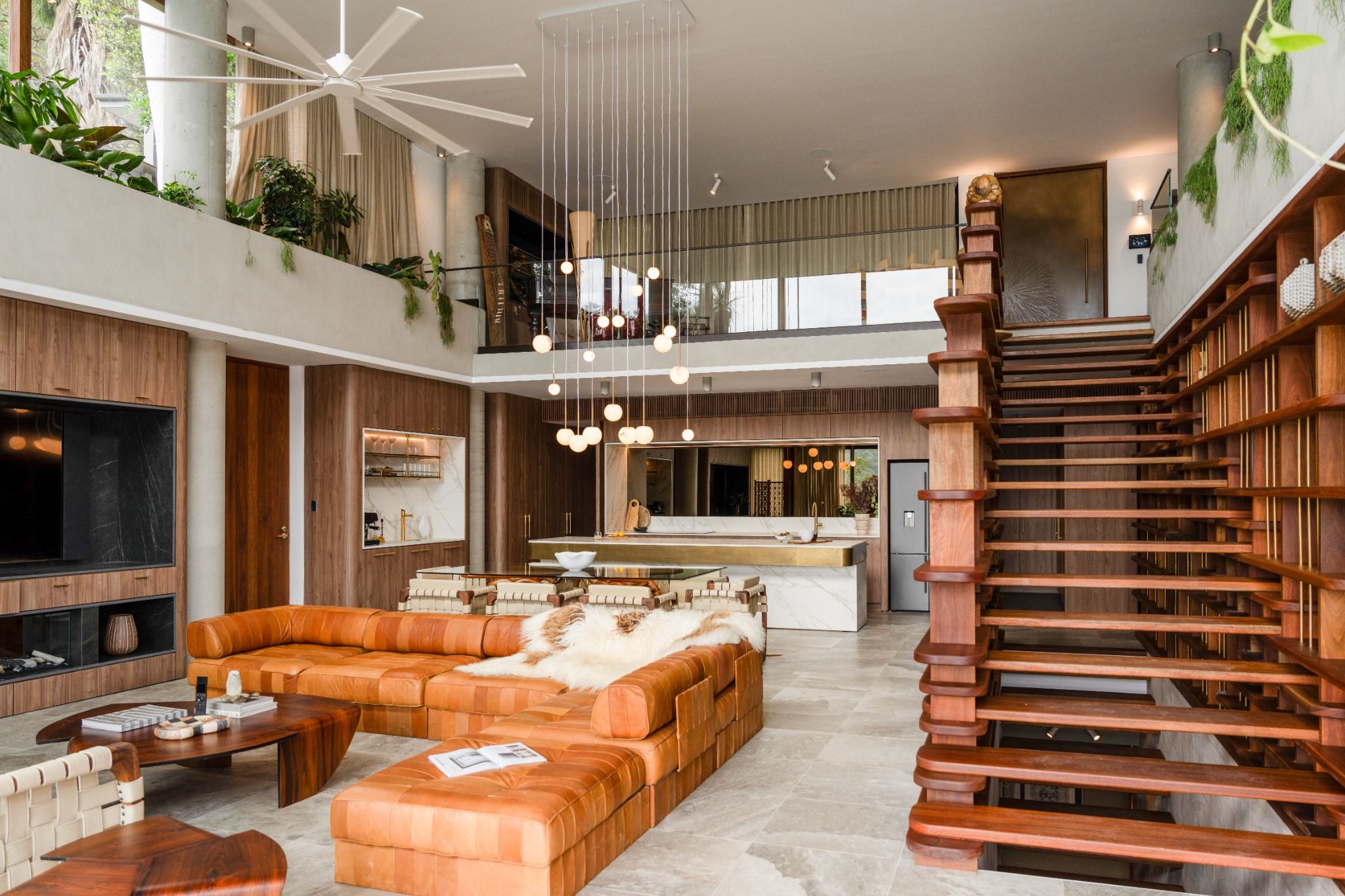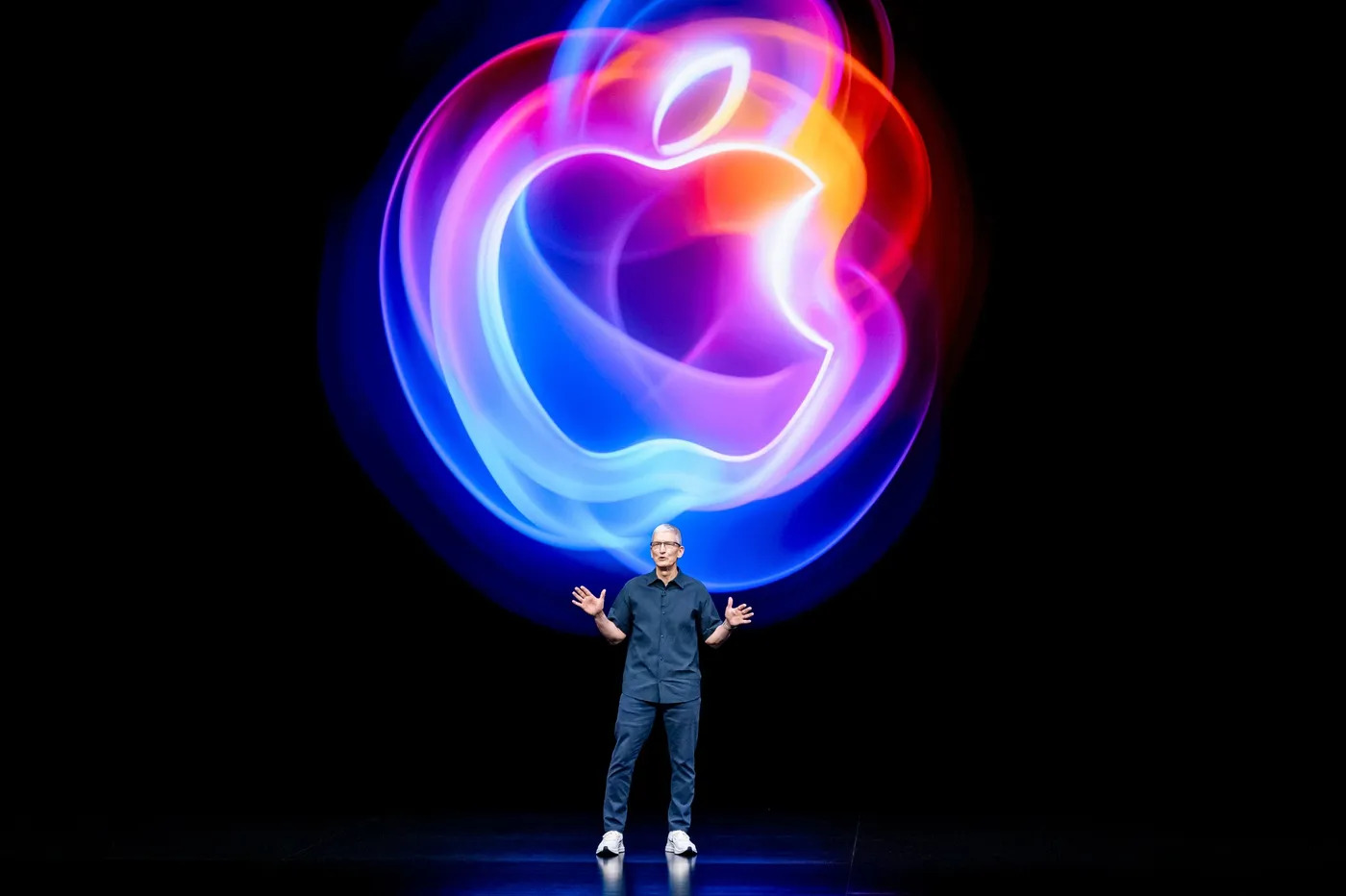A high-quality home theater system transforms how you experience movies, music, and games. While visuals are essential, sound is the key to creating an immersive environment that captivates your senses. From the evolution of audio technology to the components that make up a great system, this guide will help you understand what goes into creating a home theater that delivers breathtaking sound.
The Evolution of Surround Sound: From Stereo to Dolby Atmos
.jpeg)
In the early days, stereo sound was revolutionary, using two speakers (left and right channels) to create depth and directionality. Over time, home theaters adopted surround sound, introducing rear speakers in a 5.1 configuration (five speakers and a subwoofer) to immerse the listener in multi-directional audio.
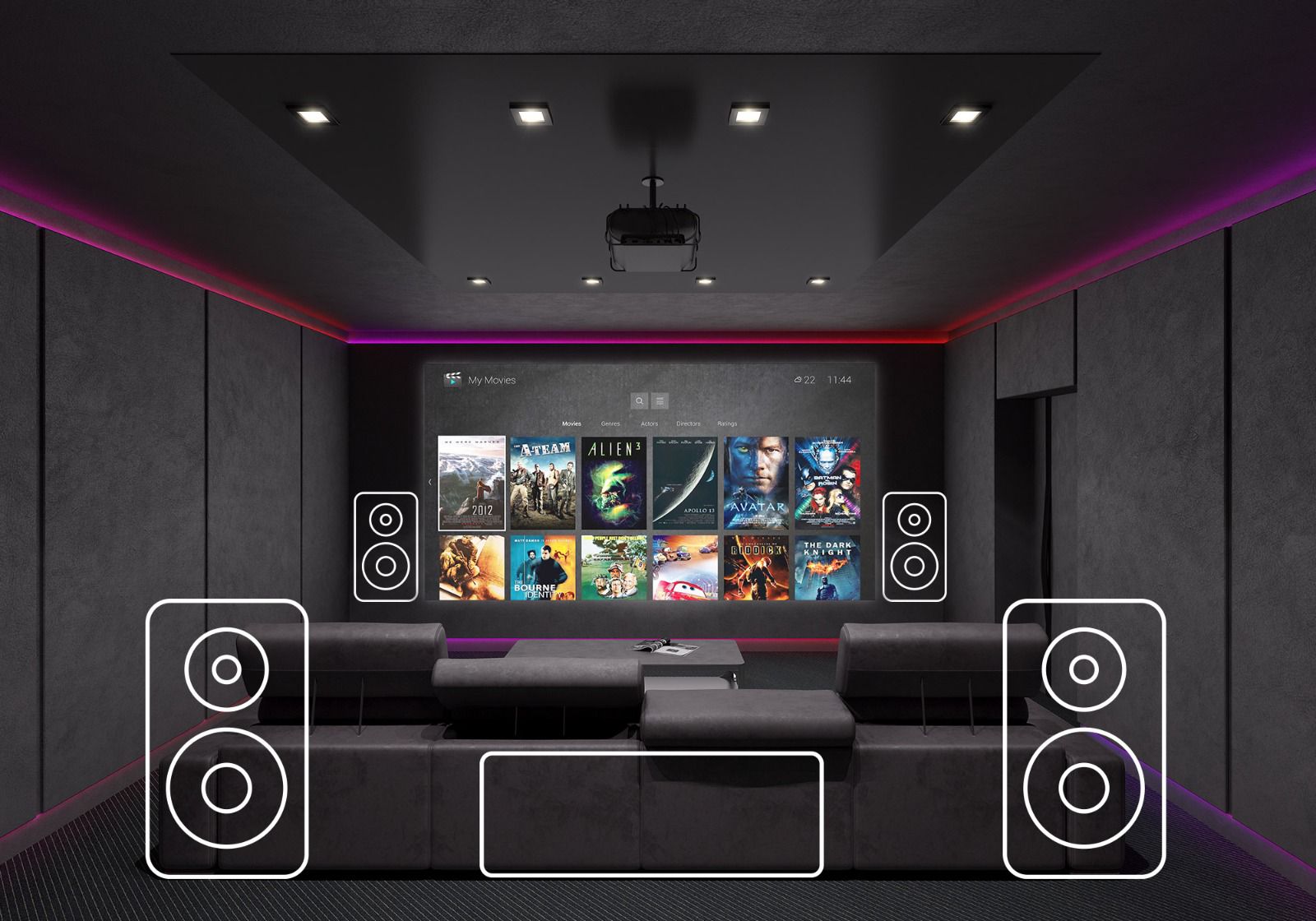
Today, Dolby Atmos has set a new standard for cinematic sound. Unlike traditional systems that assign sound to specific channels, Atmos uses object-based audio, allowing sounds to move freely in a 3D space. With the addition of height speakers, Dolby Atmos creates a lifelike experience—whether it’s a helicopter flying overhead or subtle environmental effects that draw you into the scene.
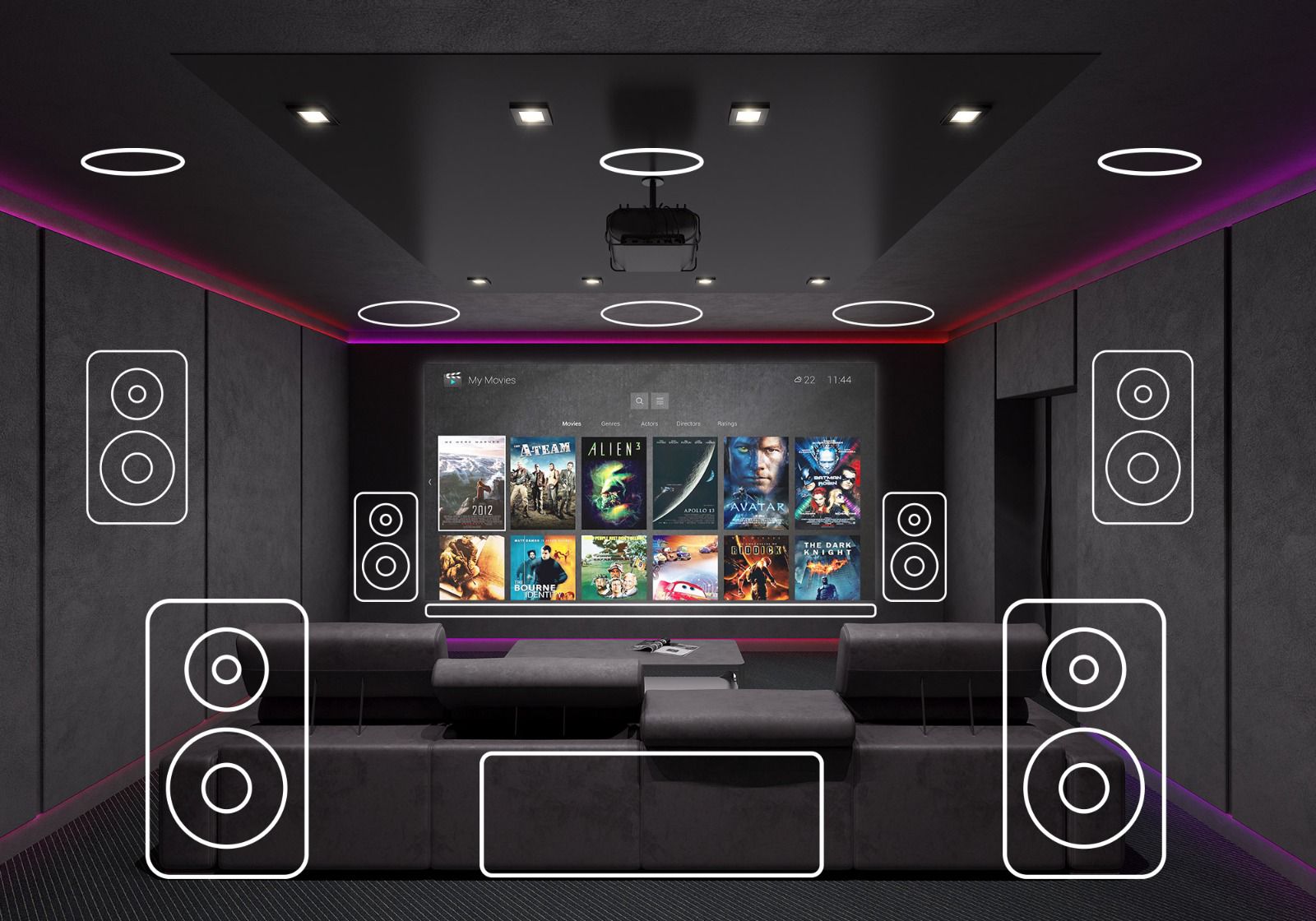
Key Components of a Home Theater Sound System
1. Audio Processor
The processor is the command center of your home theater, decoding formats like Dolby Atmos, DTS, and more. It ensures that each speaker delivers the precise sound it’s designed for, from crystal-clear dialogue to earth-shaking bass.
Beyond simple decoding, it adjusts the signal levels for each speaker, fine-tuned during calibration, to trick your ears into believing sound is coming from specific directions or distances. This doesn’t reflect your perspective—it places you in the shoes of the movie’s protagonist, creating a level of intimacy and immersion that will make you rediscover your favorite films like never before.
2. Speakers: Dynamic Range and Placement
Your speakers play a crucial role in delivering the sound crafted by your audio processor. Depending on their capabilities, they may or may not fully reproduce the signals as precisely as the processor has adjusted them.
In movies, where sound transitions can leap from a gentle whisper to a roaring explosion, the dynamic range of your speakers becomes critical. This range determines how well they can handle the softest and loudest sounds without losing clarity. The greater the dynamic range, the more faithfully your speakers can recreate every moment, immersing you in the full emotional impact of the soundtrack.
3. Amplification: Types A, AB, and G
In addition to an audio processor, separate amplifiers may be necessary to boost the signals coming from the processor, ensuring your speakers perform as intended. Ideally, an amplifier should have minimal impact on the original signal—known as low distortion—resulting in a cleaner, more accurate sound. Amplifiers with low distortion are highly valued for preserving the clarity of the original audio.
Amplifiers provide the essential power for your speakers, and there are several types to consider:
- Class A Amplifiers: Known for their unmatched clarity, but they consume more energy.
- Class AB Amplifiers: Offer a balance between efficiency and performance, making them a popular choice.
- Class G Amplifiers: Use advanced technology to deliver exceptional energy efficiency without compromising on sound quality.
- Class D Amplifiers: Known for their high efficiency, they convert most of the input power into sound, generating minimal heat.
Choosing the right amplifier ensures that your speakers operate at their best, delivering every detail and impact as intended.
4. Calibration Systems: Dirac Live
Every room influences sound differently due to factors like furniture placement, wall materials, and natural acoustics. Dirac Live is a cutting-edge calibration system that analyzes these elements and fine-tunes your audio setup to ensure perfectly balanced sound, no matter the space. The result? Precise bass, crystal-clear dialogue, and an immersive experience tailored specifically to your room.
Don’t be intimidated—running the basic setup wizard is simple and delivers impressive results. However, an advanced calibration unlocks the full potential of your system, taking your listening experience to an entirely new level of immersion and excitement.
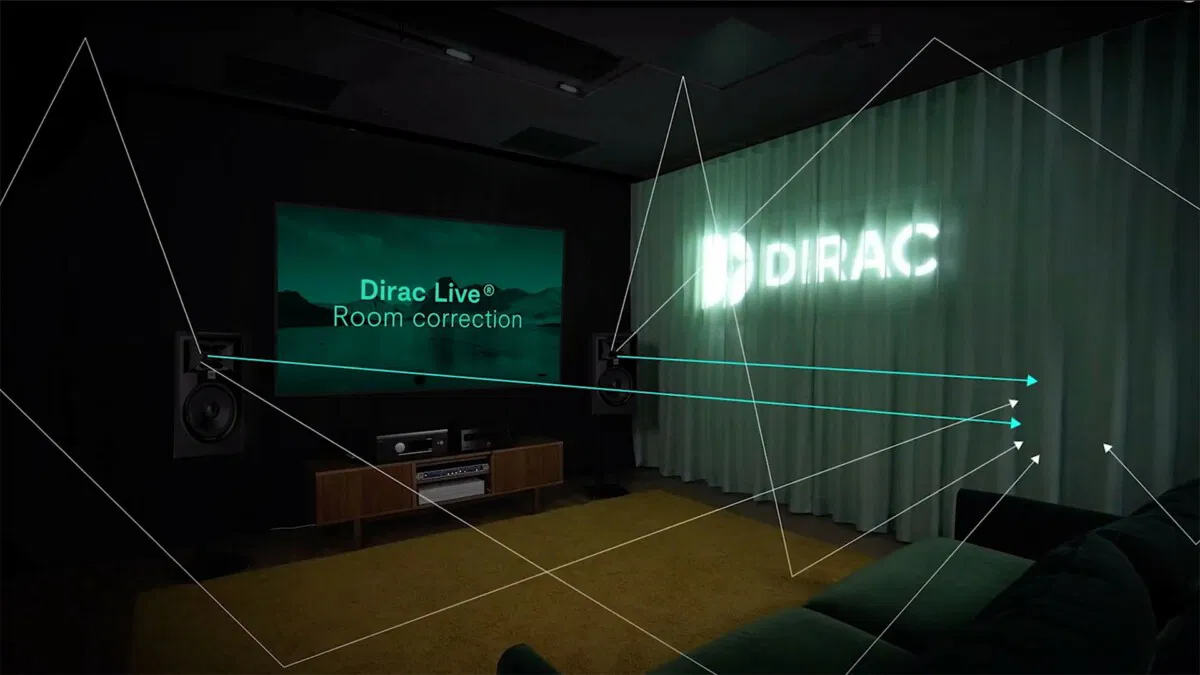
5. THX-Recommended Sound Levels
To recreate a true cinematic experience, THX recommends maintaining sound levels of 85 dB SPL at your listening position, with peaks reaching up to 105 dB SPL. These levels ensure both clarity and impact, capturing the full dynamic range that filmmakers designed for their stories.
When we talk about advanced calibration, this is what we mean: adhering to the high-level audio mixing standards set by professionals. By aligning your system to these precise guidelines, you can connect with the director’s vision in every detail, experiencing their emotions and intentions exactly as they were meant to be felt.
The Legacy of High-End Audio
JBL and the Birth of THX
JBL has been a pioneer in sound for decades, playing a significant role in shaping the audio landscape. Their partnership with Lucasfilm during the development of THX standards cemented their reputation as industry leaders. Today, JBL continues to set the bar for professional-grade home audio, blending innovation and heritage. JBL developed technologies to ensure sound is heard exactly as audio engineers intended:
High-Power Transducers: Transducers capable of handling extreme power levels while maintaining clarity and precision.
Horn-Loaded Drivers: A technology that enhances sound projection and efficiency. Ensure that every detail of the audio mix is heard, even in large spaces.
Extended Frequency Response: This technology ensures that every element in a soundtrack—from the lowest rumble to the highest chime—is delivered with stunning accuracy.
Controlled Directivity: Consistent listening experience, regardless of the listener’s position, mirroring the environment of professional mixing studios.
Building Your Dream Home Theater
Whether you’re starting with a basic surround system or investing in a Dolby Atmos setup, the key is to prioritize getting good audio processing, calibration system and amplification (Audio-Video Receiver), don’t underestimate the impact of calibration. Position your speakers correctly and you’ll create a home theater that offers unforgettable audio experiences. Here some of my personal recomendations:
Audio Processing and Amplification (AVRS):
JBL Synthesis: SDR-38 ($8,626 USD)
The SDR-38 is a high-end Audio Video receiver from JBL Synthesis, designed for premium home theater systems.
- Dolby ATMOS, DTS:X, and Auro-3D immersive audio formats
- DIRAC Live with Bass Control room EQ
- HDMI 2.1 (8K Ultra HD)
- IMAX Enhanced certification.
- Up to 7.1.2 channels systems
- Class G Amplification
.jpeg)
Arcam: MA9100HP ($1,825 USD)
The JBL Modern Audio A/V receivers consist of five models based on a platform of fundamental connectivity with the latest features for video and music, with additional premium features
- Up to 7.2.2-channel systems
- Dolby Atmos and DTS:X
- Class D Amplification
- EZ calibration
- Dirac Live
- Music Streaming
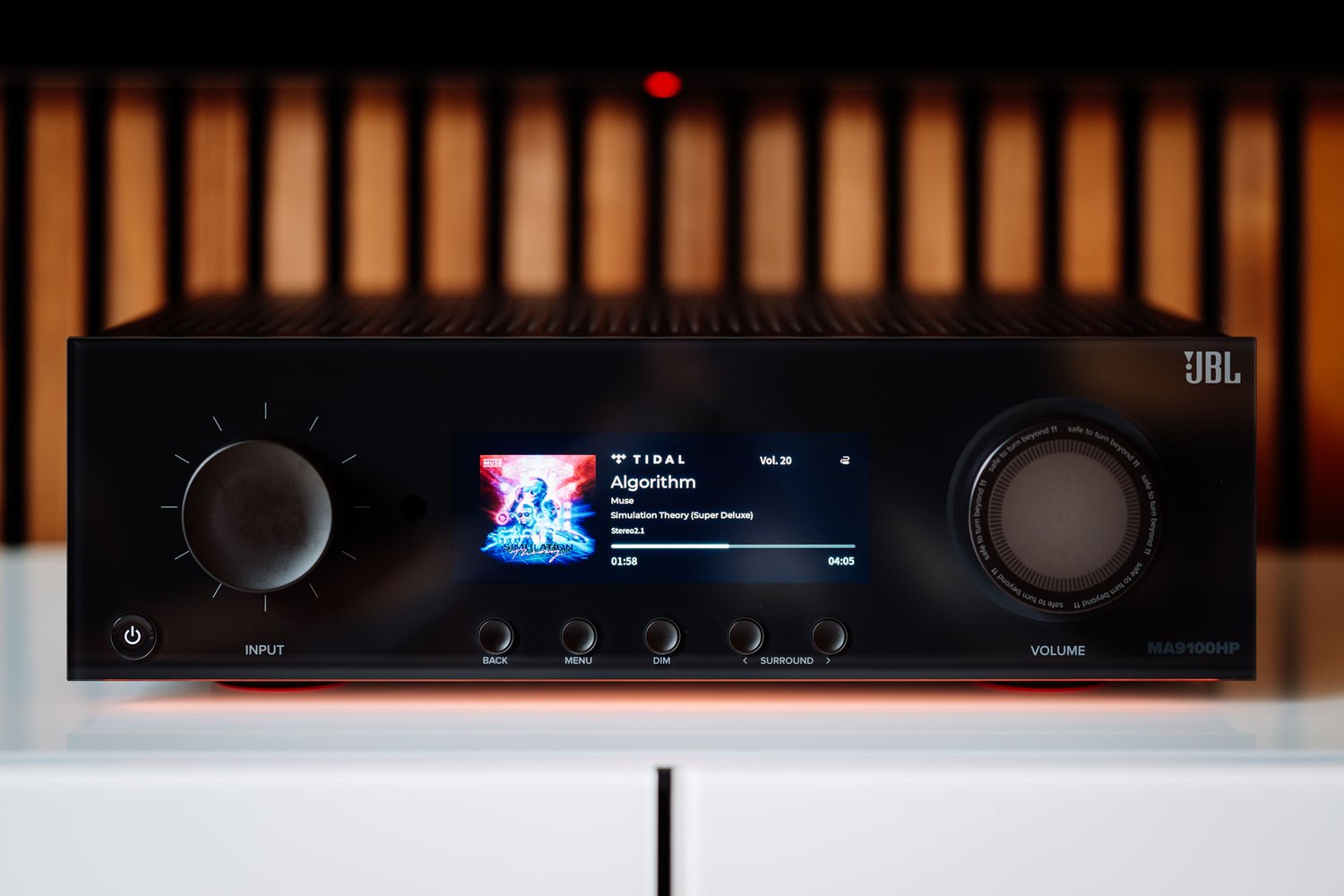
Speakers:
FRONT (left and right):
JBL Synthesis: HDI-3800 ($2423 USD/each)
- 2.5-Way Floorstanding Loudspeaker
- Patented 2410H-2 high-frequency compression driver
- Advanced Aluminum Matrix cone woofer.
- Patented HDI (High-Definition Imaging) waveguide technology
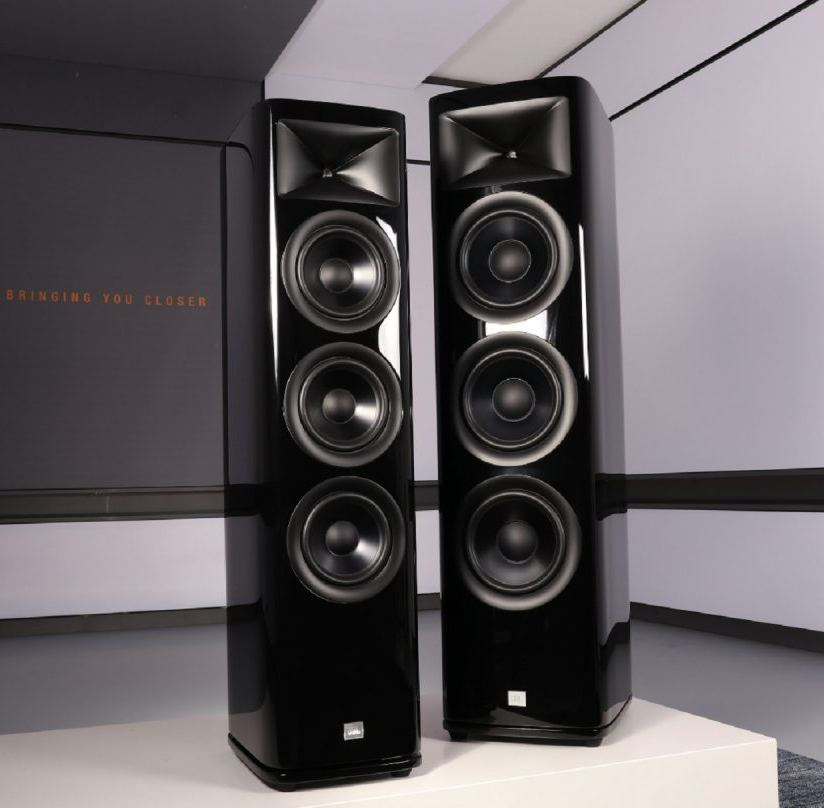
Arcam: Stage 2 280F ($614 USD/each)
- Dual 8-inch (200mm) Polycellulose Ribbed Cone Woofers
- Next Generation HDI Horn
- Anodized Aluminum Tweeter
- 2.5-Way Dual 8-inch Floorstanding Loudspeaker
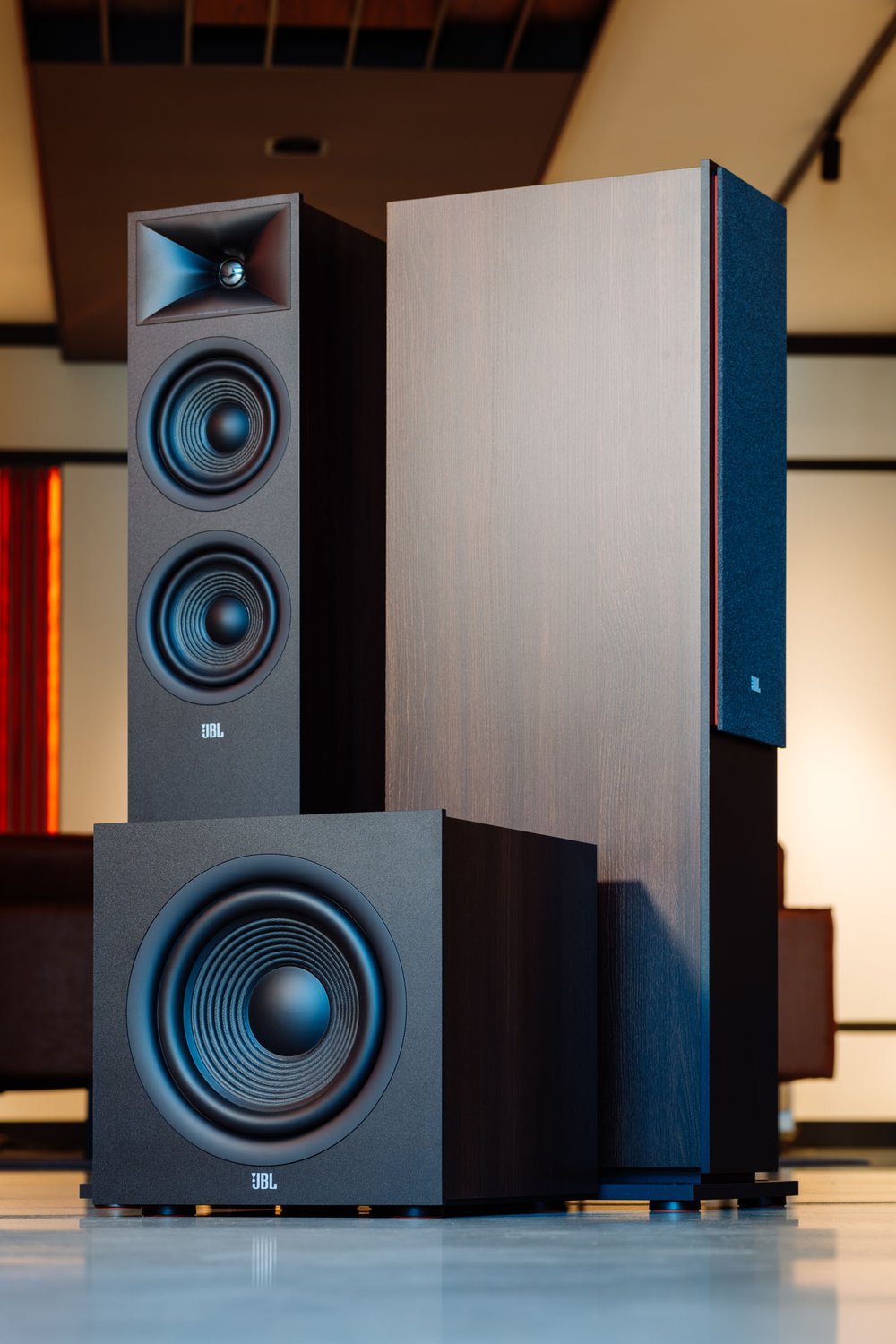
CENTER:
JBL Synthesis: HDI-4500 ($1,639 USD)
- Patented HDI (High-Definition Imaging) waveguide technology
- Patented 2410H-2 high-frequency compression driver
- Quad 5.25-inch (130mm) cast frame, Advanced Aluminum Matrix cone woofers with 1.5-inch voice coils
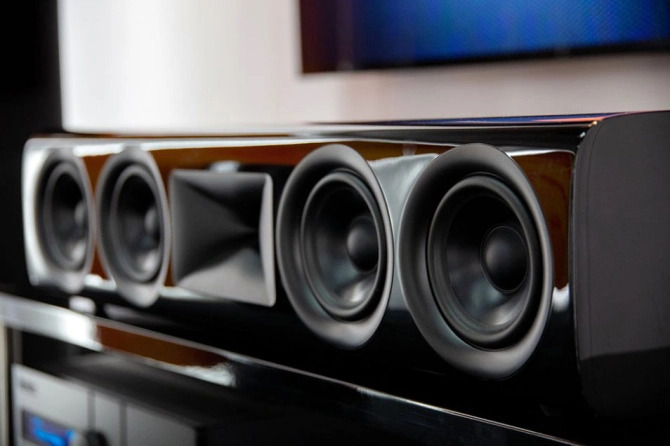
Arcam: Stage 2 245C ($410 USD)
- Quad 4.5-inch (114mm) Polycellulose Ribbed Cone Woofers
- Precision 2.5-Way Crossover
- Next Generation HDI Horn
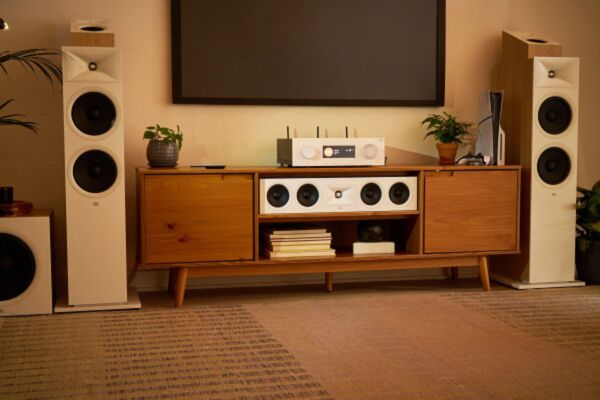
Sorround
JBL Synthesis: HDI-1600 ($870 USD/par)
- Patented HDI (High-Definition Imaging) waveguide technology
- Patented 2410H-2 high-frequency compression driver
- 6.5-inch (165mm) cast frame, Advanced Aluminum Matrix cone woofer with 1.5-inch voice coil
- Contemporary design with premium finishes including high-gloss Black, satin Gray Oak wood veneer, and satin Walnut wood veneer
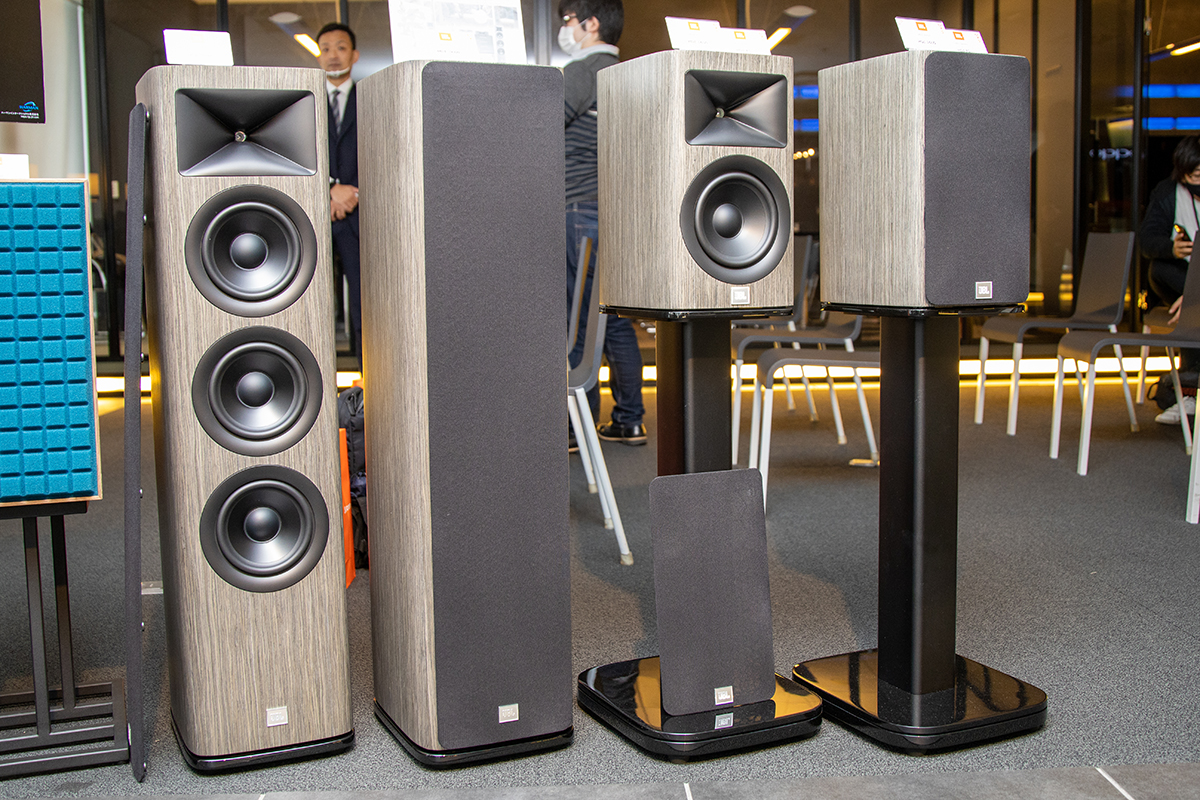
Arcam: Stage 2 250B ($408 USD/par)
- 5.25-inch (130mm) Polycellulose Ribbed Cone Woofer
- Precision 2-Way Crossover
- Next Generation HDI Horn
- 1-inch (25mm) Anodized Aluminum Tweeter
- 5-Way Binding Posts
- Anti-Slip Pads
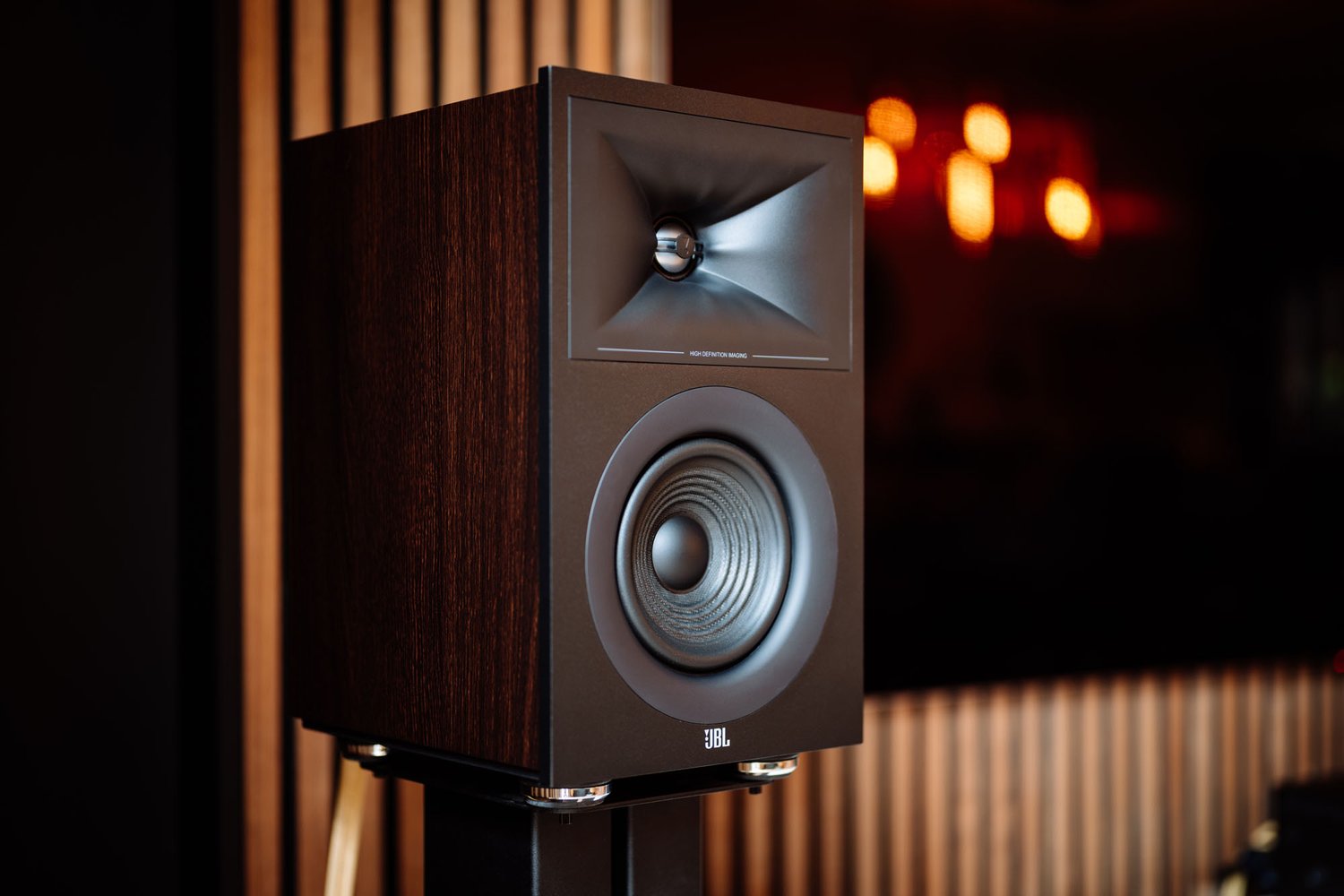
Dolby Atmos
JBL Synthesis: SCL-8
- 2-way in-ceiling loudspeaker system designed for off-axis listening as height, in-ceiling LCR and surround channels
- 1-inch 2410H-2 compression driver tweeter mated to a JBL patented offset High-Definition Imaging (HDI™) horn assembly
- 5.25-inch (130mm) Advanced Aluminum Matrix cone, cast frame woofer with acoustic aperture waveguide baffle
- Patented Cat Claw installation mechanism
- Gold plated, spring-loaded binding posts
- Includes paintable round and square zero-bezel, magnetically attached grilles
.jpeg)
Arcam: Stage 2 240H
- 4.5-inch (114mm) Polycellulose Ribbed Cone Woofers
- Precision 2-Way Crossover
- Next Generation HDI Horn
- 1-inch (25mm) Anodized Aluminum Tweeter
- Switchable Modes (Dolby Atmos or Surround/Height)
